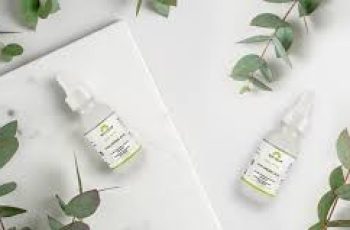
.webp)
.webp)
.webp)
Hold Up—Do We Need to Be Concerned About Filler Migration Now? Experts Weigh In
.webp)
.webp)
The popularity of facial fillers has skyrocketed in recent years, and with that rise, so have stories of “bad” filler experiences.
.webp)
.webp)
.webp)
These stories often include horror tales of overfilled areas or, even worse, filler migration.
.webp)
.webp)
Filler migration, a term that has gained a lot of traction on social media platforms, is causing concern for many.
.webp)
.webp)
.webp)
With TikTok being flooded with nearly 83 million posts about the topic, it’s hard not to wonder—should we be worried?
.webp)
.webp)
The short answer is no. While filler migration is a real possibility, it is much rarer than many viral posts would suggest.
.webp)
.webp)
.webp)
We reached out to board-certified plastic surgeon Dr. Jeffrey G. Lind II and nurse practitioner Vanessa Coppola, APN-C, FNP-BC, to break down the reality of filler migration.
.webp)
.webp)
In this post, we’ll dive deep into what filler migration is, how to identify it, and how to treat it—if it happens at all. Let’s set the record straight.
.webp)
.webp)
.webp)
What Exactly Is Filler Migration?
.webp)
.webp)
Filler migration refers to the movement of dermal fillers from their intended injection sites. Typically, these fillers are used in areas like the lips, cheeks, and under the eyes. However, sometimes they shift.
.webp)
.webp)
.webp)
Dr. Lind explains, “Filler migration happens when a filler that’s meant to stay in one area, like the lips, ends up moving to a different part of the face.”
.webp)
.webp)
In theory, most FDA-approved fillers are made with gel formulas designed to stay put. But various factors can still cause them to move, including overfilling or incorrect injection techniques.
.webp)
.webp)
.webp)
How Do You Know if Your Filler Has Migrated?
.webp)
.webp)
Sometimes, it’s pretty obvious. One of the most common areas where migration occurs is the lips.
.webp)
.webp)
.webp)
Nurse Practitioner Vanessa Coppola shares, “The perioral area, or the skin around the lips, is where we most frequently see migration.”
.webp)
.webp)
She continues, “The filler may move from the lip itself and migrate outward into the surrounding skin.”
.webp)
.webp)
.webp)
This shift can often be seen by observing the profile of the lips. If the lip looks fuller or less defined, or if there’s a noticeable white cast in certain areas, it could be a sign of migration.
.webp)
.webp)
In more subtle areas, such as under the eyes, identifying filler migration can be trickier. In the tear trough area, filler migration may result in a bumpy or uneven appearance.
.webp)
.webp)
.webp)
As Vanessa explains, “In the tear trough, filler can sometimes migrate toward the surface of the skin.
.webp)
.webp)
It may look like a ‘tootsie roll’ shape, where there’s an area of fullness that disrupts the smooth contour of the lower lid.”
.webp)
.webp)
.webp)
While these signs are helpful, it’s important to consult with a skilled injector for an accurate diagnosis before jumping to conclusions.
.webp)
.webp)
What Causes Filler Migration?
.webp)
.webp)
.webp)
Filler migration can happen for several reasons, some related to how the procedure is performed, and others due to natural factors that are hard to predict.
.webp)
.webp)
Overfilling
.webp)
.webp)
.webp)
One major cause of migration is overfilling a particular area. Dr. Lind notes that adding too much filler can cause it to spill over into surrounding tissues, leading to migration.
.webp)
.webp)
“Overfilling can lead to uneven distribution, making the filler move where it shouldn’t.”
.webp)
.webp)
.webp)
Incorrect Injection Depth
.webp)
.webp)
Another key factor is the depth at which the filler is injected.
.webp)
.webp)
.webp)
Coppola highlights that, “Injecting filler too superficially, especially in areas of high muscle movement like the lips or under the eyes, can cause the filler to migrate.”
.webp)
.webp)
An intimate knowledge of facial anatomy is crucial to avoid mistakes like this. Experienced injectors understand how deep to go, where to inject, and the types of filler to use for different areas of the face.
.webp)
.webp)
Repeated Filler Injections
Sometimes, filler migration results from layering more product over time. “Injecting fillers repeatedly into the same area can contribute to migration,” says Dr. Lind.
“The skin may not have enough time to settle or adjust between treatments.”
Certain fillers are more prone to migration than others, and factors like muscle activity and the natural elasticity of your skin also play a role.
How Can Filler Migration Be Treated?
If you discover that your filler has migrated, the good news is that there are options for addressing it.
Option 1: Do Nothing
If the migration isn’t bothering you cosmetically or physically, sometimes the best solution is to simply wait.
“Most hyaluronic acid fillers break down naturally over time, typically in about six months to a year,” Dr. Lind shares.
This is the least invasive option. If the migration is mild and doesn’t interfere with your appearance, it’s worth considering giving your body time to absorb the filler naturally.
Option 2: Dissolve the Filler
If you want a faster fix, you can dissolve the filler. “Hyaluronidase is a medication that can be injected to break down hyaluronic acid-based fillers,” Dr. Lind explains.
This procedure, however, may take several sessions and can cause discomfort. Depending on your pain tolerance, it could feel sharp or burning, but many find the results worth the temporary discomfort.
I’ve had to dissolve filler myself, and while the sensation wasn’t pleasant, the relief of having a smooth and natural result afterward was undeniably satisfying.
Can Filler Migration Be Prevented?
While it’s impossible to guarantee that filler migration won’t happen, there are several ways to reduce the risk.
Choose an Experienced Injector
Dr. Lind emphasizes that one of the most important factors in preventing migration is selecting a skilled injector.
“You should always work with a board-certified injector who has extensive experience in facial anatomy.”
Choosing a provider who understands the complexities of your face is essential. “A good injector knows how to choose the right filler for the right area and how much to inject.”
Avoid Overfilling
Injectors should be cautious about placing too much filler in one area.
“Excess filler is one of the leading causes of migration,” says Dr. Lind. A conservative approach ensures that the filler remains in the desired area.
Care After the Procedure
After getting fillers, proper aftercare is crucial. Both experts advise avoiding sleeping on your face for at least 48 hours post-treatment. This minimizes the risk of pressure shifting the filler around.
The Final Takeaway: Should You Be Worried?
Filler migration may be a hot topic on social media, but it’s not as common as some might think. “The vast majority of filler procedures go smoothly,” says Dr. Lind.
When performed by a skilled injector, dermal fillers are a safe and effective way to enhance facial features.
“The real causes of migration tend to be technical errors or poor judgment during the procedure,” he explains.
If you’re considering getting fillers, it’s important to do your research. Look for a provider with solid credentials, plenty of experience, and a good track record with patients.
Don’t hesitate to ask questions during your consultation. A reputable injector will be happy to answer any concerns and guide you through the process.
When done right, fillers can provide a youthful, refreshed look without the worry of unwanted side effects.



